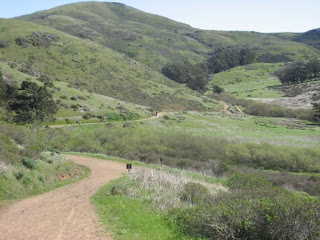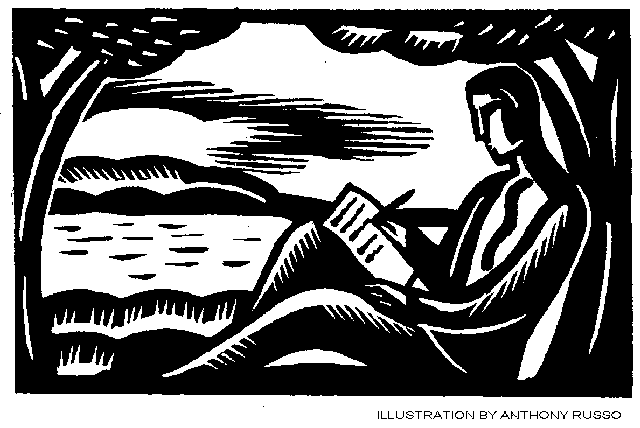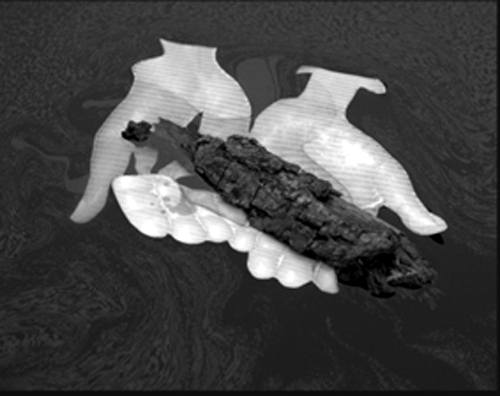It’s the end of July (or, as we call it in Texas, “late spring”), so I’ve been thinking a lot about summer reading, which has almost become a sort of cliché. There’s a lot to be said for curling up with a good book on a cold, wet winter day, of course, but nobody talks about “great winter reading.” No, it’s summer reading that gets all the press.
For some, summer’s a time to dip into a book we would only read on the beach or in the vacation cabin, the literary equivalent of comfort food—meatloaf, say, with a big pile of mashed potatoes on the side. Thrillers and mysteries tend to fall into this category.
For others, summer’s slower pace is the perfect time to tackle the classics, those monumental books we’ve always felt we ought to read but have never quite gotten around to. Reading these books can feel a little bit like eating several helpings of healthy vegetables, instead of doubling down on the meatloaf and mashers; but that, of course, can make you feel very virtuous indeed. Proust? Sure! Tolstoy? Bring it, baby!
As for me, certain books will forever conjure summer in my mind, and I can’t even tell you why. Here’s my (very) personal top ten, with brief annotations, in alphabetical order by author:
Brendan C. Boyd and Fred C. Harris, The Great American Baseball Card Flipping, Trading and Bubble Gum Book. What could possibly be more evocative of an American summer (if you’re Of a Certain Age, that is) than a book of color photos of baseball cards from the 1950s and 1960s, accompanied by wise-ass commentary? Samples: “Earl Torgeson’s two favorite activities were fist-fighting and breaking his shoulder, both of which he did whenever he got the chance.” “Albie Pearson would have been, had he been only six inches taller, almost 5’11”.” And so on.
Richard Bradford, Red Sky at Morning. In this coming-of-age novel, teenager Josh Arnold and his high-strung Southern belle mother move from Mobile, Alabama, to the mountains of New Mexico during World War II and try, with mixed success, to adjust to a new culture and climate. Perhaps the funniest book I’ve ever read, and also one of the sweetest and most moving.
Doris Kearns Goodwin, Team of Rivals: The Political Genius of Abraham Lincoln. A brilliant examination of how Lincoln shrewdly and gently won over some of his bitterest political enemies. In particular, I found the depiction of William Seward’s change of heart—by the time of Lincoln’s assassination, Seward worshipped him—profoundly moving. Goodwin is a wonderful writer, capable of making the familiar feel new: while I was reading this book for the first time, Heather came home one day to find me sitting in a chair, the book in my lap and tears running down my cheeks. “What’s wrong?” she asked anxiously. “They just shot Lincoln!” I sobbed.
Kenneth Grahame, The Wind in the Willows. Probably my favorite book when I was a boy; I don’t know how many times I’ve read it, but it must be several dozen by now. The adventures of Mole, Ratty, Mr. Toad, Badger, and all their friends turned me into a lifelong Anglophile, and the drawings by Ernest Shepard (who also illustrated that other English classic, A. A. Milne’s Winnie-the-Pooh) are masterpieces. Nothing evokes the gentle pleasures of an English summer like this book. Oh bliss! Oh poop-poop!
Tracy Kidder, Home Town. I love just about everything I’ve ever read by Tracy Kidder, who I think is perhaps the finest nonfiction writer in the nation, but this is probably my favorite: a close-up of Northampton, Massachusetts, through the eyes of native son Tommy O’Connor, a cop who loves his hometown and touches a diverse (to say the least) cross-section of its citizenry. Highly recommended for anyone who’s ever felt a deep connection to a place, or anyone who’s ever wanted to.
Dennis Lehane, The Given Day. This historical novel interweaves the stories of Danny Coughlin, a young Irish-American cop, and Luther Laurence, a young African-American fleeing criminal violence, in Boston at the end of World War I. Actual events (the flu epidemic, the Boston police strike, the Red Scare) and characters (J. Edgar Hoover, Calvin Coolidge, and, most notably, Babe Ruth) lend the book the texture of reality, while Danny and Luther and the women they love attempt to survive against long odds.
Larry McMurtry, Lonesome Dove. I confess I can no longer read this without thinking of the miniseries—Robert Duvall, Tommy Lee Jones, Diane Lane, et al.—but the book itself is wonderfully suited for reading aloud on summer road trips, as we’ve proven repeatedly over the years while driving to or from Colorado and New Mexico.
J. K. Rowling, the Harry Potter series. Well. What can I say? We all loved all these books. Some of my favorite summer reading memories with the kids involve rushing out (to our neighborhood Randall’s, of all places) to buy multiple copies of the latest Harry Potter book on the day it came out, and then the hush—not quite absolute, but punctuated by occasional snorts and gasps and “How far are you?”s—that fell over the house as each of us burrowed immediately into his or her copy.
Alexander McCall Smith, The No. 1 Ladies Detective Agency series. Not really mysteries, despite the title, but the wise and gentle adventures of the sweet but determined and “traditionally built” Precious Ramotswe, the first woman private investigator in Botswana; Mr. J. L. B. Matekoni, her suitor and the proprietor of Tlokweng Road Speedy Motors; Grace Makutsi, Mma Ramotswe’s hyperconscientious assistant; and various others as they confront a succession of quiet moral and ethical challenges.
Wallace Stegner, Angle of Repose. A heartbreaking novel about the American West and the people who struggle to live in it, and the most harrowing and realistic fictional portrayal of a marriage I’ve ever read. Framed by the narration of a retired and embittered history professor, the novel is really the story of his grandmother, a refined nineteenth-century Easterner who marries an ambitious young mining engineer and embarks on a peripatetic life of frustration and accommodation.
So there you have it: ten of my seasonal favorites, right up there with fresh peaches and gin and tonics. Won’t you tell us yours, Dear Reader?
What we’re reading
Heather: Ellen F. Davis, Scripture, Culture, and Agriculture: An Agrarian Reading of the Bible (again)
Martin: A. J. Jacobs, The Know-It-All: One Man’s Humble Quest to Become the Smartest Person in the World









